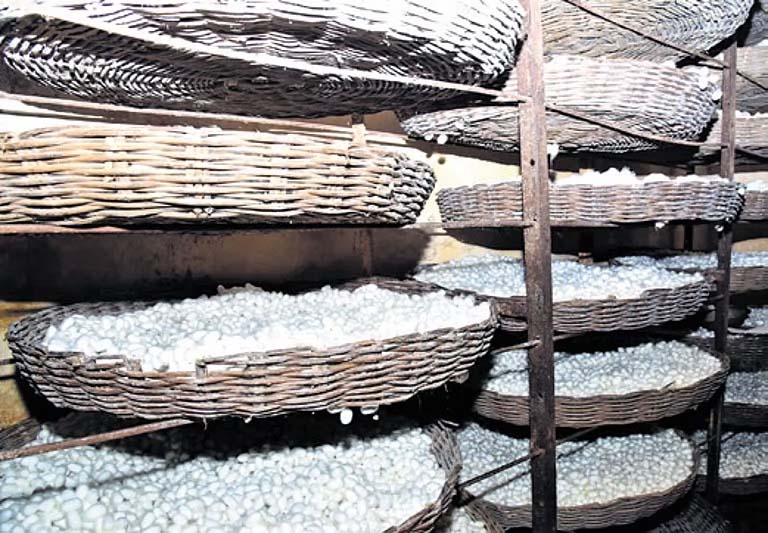BENGALURU: Karnataka is the leader in production of silk sarees and other silk materials in the country, but it will now take the lead in exporting silk cocoons, which are consumed in North-Eastern states and South East Asian countries as they are a rich source of protein.
India has seen the opportunity early and found that the demand for silk cocoons is rising from countries where tourism is their primary source of income, like Singapore and other South East Asian countries.
“India is one of the largest silk producers, and Karnataka is the leader. Silk cocoons from here can be supplied to other countries where the demand is rising. We are working on keeping the cocoons alive after reeling the silk so that they can be exported.
Already, the dead pupa, after reeling, is dried, powdered and exported. It is also fed to dogs as a protein supplement,” Member Secretary and CEO, Central Silk Board (CSB), Sivakumar Periyasamy, said.
R&D is on to keep the pupa alive and documents are being prepared on the modalities for silk extraction from live pupa. In the North-East, eri silk pupa is consumed and in cities like Dimapur in Nagaland, it is sold at Rs 700-1,200 a kg.
Consumption of silk cocoons is legal in other countries, and is a traditional practice in North-East India. The demand for mulberry silk cocoons is rising and since Karnataka leads in mulberry silk material production, it is the best place to source cocoon from.
There is also a demand for silk protein-rich cosmetics from countries like Thailand. Work is happening to strengthen the silk byproduct sector, including pharmaceuticals. Here, researchers are working with private firms, Periyasamy said.
International studies have found silk cocoons to be rich in amino acids, healthy fats, omega-3, minerals and vitamins. It is consumed in large quantities in China, Vietnam and Japan.
The CSB is working on giving a stiff competition to China, which is also a large silk producer. An official from the Textile Ministry, also a member of the international seri-commission, not wanting to be named, said, “The target for raw silk production is 42,000 metric tonnes annually, but the production is 39,000 metric tonnes, 43% of this is from Karnataka, followed by North-Eastern states.
India continues to import 2,500-3,000 metric tonnes from China. Steps are being taken to improve the international grade silk production and stop imports, while work is happening to strengthen the export of silk byproducts, including cocoons. We cannot let the market slip to China.”
